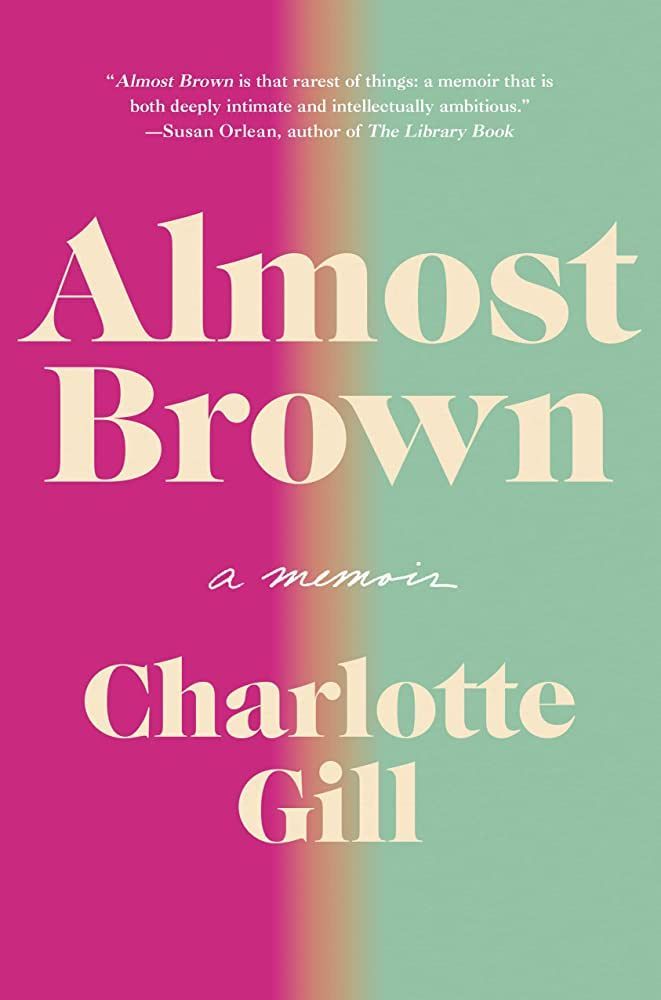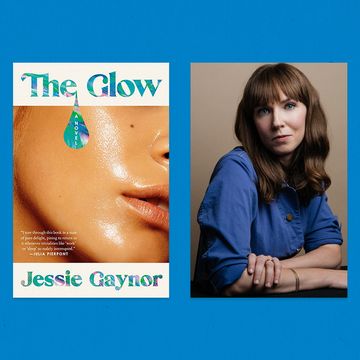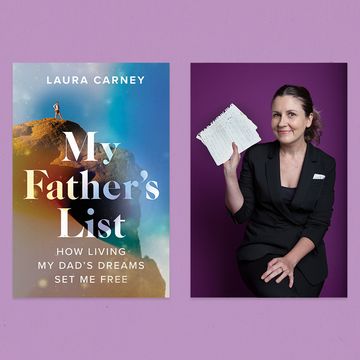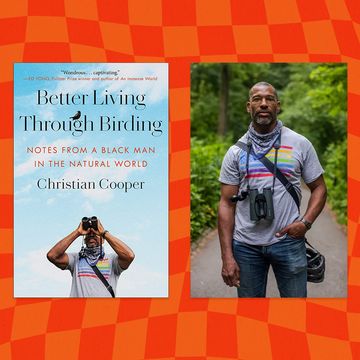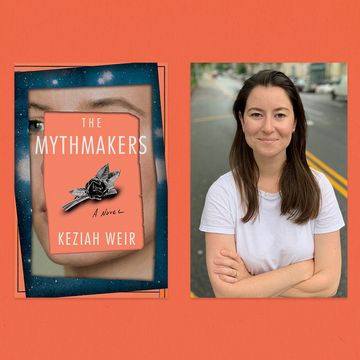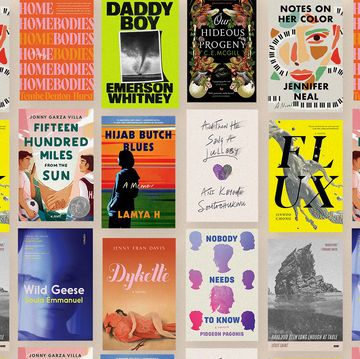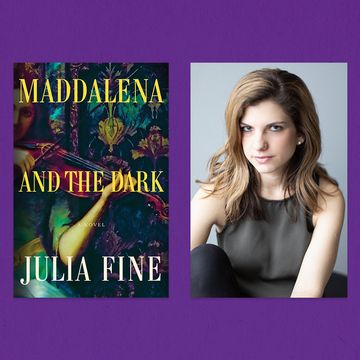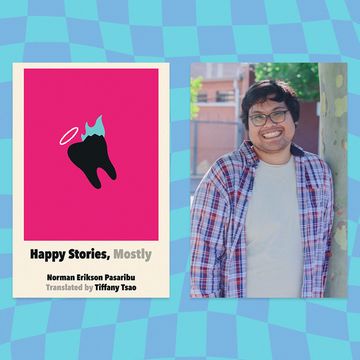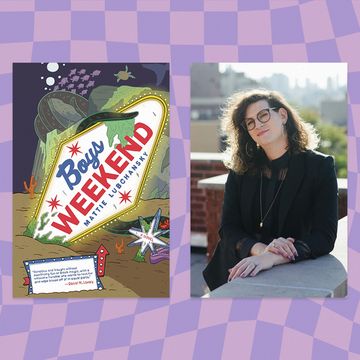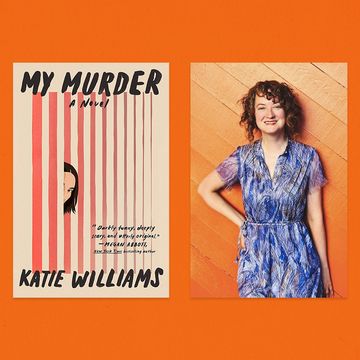The first line of Almost Brown is striking yet simple: “My father’s skin is the color of a medium-roasted coffee bean,” writes Charlotte Gill, who was born in London and is the award-winning Canadian author of Eating Dirt and Ladykiller. The simple description unfurls into an intellectual excavation and a stunning study of the self.
“Wherever I go,” Gill continues, “I note the magnetic pull of racial alignment — who lingers in the corners and who moves through the air as if they own it. I’m also searching for something of my own: Where do I fit within this vast chromatic range of human skin? I have never felt totally at ease in my own semi-brown skin, nor with the many labels applied to it.”
The memoir is a history lesson in culture, colonialism, and world events — from her father’s plight in India and Kenya to her mom’s native England — and also in life. It’s a retracing of Gill’s past growing up in Canada and then the United States. It’s not just about being raised by globe-trotting immigrants and growing up biracial in a country and culture new to them; it’s also about living in a fizzling nuclear home.
When Gill was a child, her father left for weekends at a time with no trace or mention of where he was off to. And as her father’s disappearances became more frequent, she and her two siblings — a twin and younger sister — watched their parents’ relationship implode. After the divorce, Gill didn’t talk to her father for decades of her adult life. But after 25 years, they found a path forward and rekindled their relationship.
The 256-page book is a funny and intimate exploration of everything from gender roles and ethnicity to microaggressions and American junk food. It’s a look at ancestry, cultural quirks, and nuances that stick with people, both drawing them to and keeping them from their homeland. The book is a reckoning with “ethnicity and belonging,” and also family. The magnetic memoir is written with brazen, open curiosity and — above all else — empathy.
Gill talked with Shondaland about forgiveness, reclamation, growing up in a multicultural household, and her message to biracial children today.
MIA BRABHAM: When did you know you needed to write this?
CHARLOTTE GILL: Mia, so late. Because for most of my life, I had no language to talk about any of this. People ask me all the time, “Didn’t your family talk about what an unusual race combination this was and how weird it was at the time?” Nobody talked about it because it was unusual. It was a little painful because I think my dad, especially, felt how prominent — how visible — he was in the couple. He was also an immigrant in North America when there weren’t so many immigrants around. This was back in the ’70s.
So, we never talked about it. I didn’t even know the word biracial applied to me, even though I heard it probably a hundred times. I think when you’re a child, you just feel like a child. You feel completely normal, but it’s not until you walk out your door and start having your own body reflected back at you by how people react to you that you begin to understand, “Oh, okay, this is what race is.” It was only in the last 20 years or so where I really started to think about what it means to be mixed.
There are 34 million Americans who are mixed, but of course, we come from all different ethnicities. We are divergent in many ways, and we share a lot of commonalities. A lot of my life was people telling me what I was. Not asking me, or having me suggest and explain what I was, but telling me. Just the other night, someone said to me, “I think of you as a white person.” It’s a very interesting, unusual experience to have your phenotype fed back to you that way.
MB: They say as you grow older, you start to see your parents not just as parents but also as people. What was that process like for you?
CG: I knew that I didn’t want to write a book that was just about a grudge. My father had a big grudge with his grandfather, and that lasted for decades. And I had a grudge with my dad that lasted for decades. But I really thought, okay, that could be just the beginning. I could write about where things broke and then how they came back together again. And that was a much more interesting story to me than just the separation.
I can now see how my parents were in this little pioneering moment. When does a white British Catholic woman get married to a turban-wearing Indian foreigner back in the ’60s? I feel as if they were trailblazers. My God. The courage it must have taken to do it. They just wanted to raise normal, happy kids. I don’t think they thought a ton about what it would be like for us as biracial children. I actually think that’s quite common for the parents of interracial couples to have no language to talk to their kids about that experience because it is a completely unique thing, totally different. I have a lot of the experiences that my mother has and my father has. And then, I have this third body of experience, which is completely different.
MB: Was it nice to have a twin brother to process this with, or did you process a lot on your own?
CG: We talked about it when we were children. We still talk about it a lot even today. But there was a lot of it that felt shameful because we really didn’t know what to call ourselves. When people asked, it felt so awkward. We had a shared experience, and then we also had divergent experiences because my brother is a man and I’m a woman. He also looks more Indian than I do. And so, he had a different racial experience out there in the world. My little sister is whiter, for lack of a better word, than both of us. She had a different experience too.
MB: You say in the book, “It occurred to me — an obvious, late-breaking realization — that there were parts of [my father] that had been inspired by the country of his birth to which he’d never returned.”
For immigrants and people who grow up in places outside of their parents’ original culture, there’s sometimes a sense of guilt attached to — what’s deemed by either ourselves or society — “late realizations” about our own culture. Like, “Yikes, why didn’t I know this until now? Why am I writing this book well into adulthood? Why didn’t I think of these questions earlier?”
Do you feel that guilt at all? What do you think about this concept of late realizations as it relates to culture and race? Is it ever too late to realize?
CG: What an amazing question. Late-breaking realizations are the source of a tremendous amount of guilt. I have a tremendous amount of guilt that I don’t speak Punjabi. I think many of us have a lot of guilt when we don’t speak our heritage dialects or don’t understand the customs that are from our parents or the generation before. But there’s a whole lot of diasporic travel, and we can end up in a completely different place. There’s a lot we have to learn.
What I have realized in the last 10 years, largely as a result of online communities, is that this sense of comedy and embarrassment about not fully connecting with your heritage culture is so common. I’m so inspired by millennials and Gen Z who actually take the time to go and research and take language classes and cooking classes and reconnect with their culture. I also think that there is a real comfort in sharing that experience of these big gaps in knowledge. It helps not to be alone.
MB: It really does. I was so moved by the scene in the airport when you wink at the little kids to let them know they’re not alone in their mixedness. We learn about your life and your parents’ lives, but your book is also such a rich history lesson in colonialism and world events. At what point in your life did you discover this information?
CG: If colonialism hadn’t happened, I wouldn’t exist. I felt the heaviness of that. I’ve known loosely about India’s history, but I wanted to know specifically about where my dad had come from and why his family had left India. I don’t think people get up and move with nothing but a satchel and cross an ocean and start over in a completely new place unless they have a really good reason.
I drew things out of my dad because he is still very reluctant to talk about his family even to this day. I will have to ask him a specific question in order for him to answer it. My father is getting close to 90, and I think a lot of people of his generation just didn’t talk about the past. But I did a ton of reading on what the consequences were, and then reverse colonization, which is the diaspora that we’re still living today. We call it post-colonialism, but it’s still really with us, the aftereffects and the legacy of it.
MB: You also went into depth about the history of societal beliefs on mixed-race people. When did you start doing that research on these beliefs that the world has held about these relationships coming together?
CG: People often ask me, “Are you confused about who you are?” I’m like, where did this idea come from that people who are mixed-race are confused about who they are? It must come from somewhere. So, I excavated backwards and traced it back to some of these very early writings by European and American scholars on “mixed bloods” and “half castes” and words we no longer use anymore for racialized people who come from mixed heritage. I realized that it had come from there. It wasn’t from anything that we had experienced subjectively as mixed people. We all come from basically the same small group of African ancestors, but these are old ideas.
MB: I think a lot of people of color can relate when you say that sometimes questions about your ethnicity seemingly come out of nowhere with no conversational warm-up. You say, “Is that not like asking someone how much money they make or how they vote? It’s not a secret, but could I get a handshake first?” I cackled out loud. What are specific questions people ask that you’re like, “Why are we still asking this?”
CG: You know what? You’re absolutely right. Why are we still asking this? When I’m standing with younger people and I’m asked what I am in front of them, they’re offended for me. I think because I’m Gen X and because no one ever said, “You should be offended by people asking that question,” I’ve just gotten used to it over time. But the feeling that I have whenever somebody asks me, “What are you?” is “Okay, here we go.” I know that it’s going to be awkward. I wish I didn’t have to do it.
I’m not so offended by that question. I’m offended when people tell me what I am. I’m like, “No, I am not, actually.” And they’re like, “Yes, you are.” I think plenty of people who are ethnically ambiguous have that experience where they are told what they are more often than they are asked. I think that bothers me more than curiosity. The reason why I think it is painful to be told what I am is because some part of me is getting erased in that equation.
MB: That was so eloquently put, just like the rest of your book. Speaking of erasing one side, there’s this amazing passage where you explore your half-white side and the privilege that comes with it. At what point did you begin exploring this in your own life?
CG: I don’t want to telegraph this exploration that I went on in this book onto everybody who is partially white, because this is a strictly personal investigation of what it means to me. There are people who are partially white that have entirely different racialized experiences than the one I have. I know that race is a construct, and our society is still really attached to its compartments and pigeonholes, but the privilege that comes with white-passing, it’s a thing. I 100 percent submit to acknowledging the privilege that comes with being half white. I am very interested in where the line is between being white-passing, which I am, and actually being white. Where is the line?
MB: What are you most proud of about the book?
CG: I don’t feel like I wrote this book with any bitterness. I wrote it from a place of love and empathy. I hope that came through in the writing. It was really important to me to make a little room for lightness and humor, even. Because I think that sometimes when we write about these things, they are so serious and heavy. But that’s not the whole thing, right? It’s not all trauma. If you can have humor and laugh, there’s a little bit of power and agency in that.
MB: For the mixed children out there, and for the parents of mixed children, what message do you want to send them?
CG: Such a great final question. When people always ask in interviews, “Is there anything you’d like to add?” I’m going to add this. The way people generally talk about mixed-race kids is as if there’s a brokenness to us or we’re shards of something. We are not broken. No way. We’re trying to find a fit in a world that still demands, “Where can I put you? What label can I put on the box?” And then they put you in the box. You are not confused. You are not broken. I just think it’s the world.
This interview has been edited for length and clarity.
Mia Brabham is a staff writer at Shondaland. Follow her on Twitter at @hotmessmia.
Get Shondaland directly in your inbox: SUBSCRIBE TODAY

